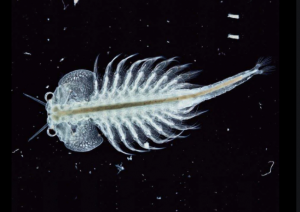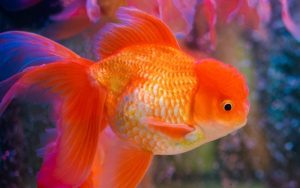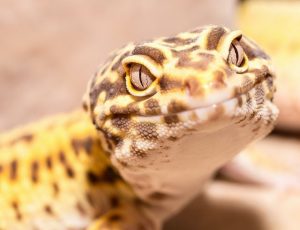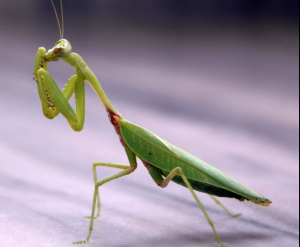15 Low-Maintenance Pets Perfect for Busy People
 Fact-checked
Fact-checked
Last Updated: March 23, 2022
Are you looking for a choice of low-maintenance pets because you’re too busy with long work hours? Our guide presents 15 pets that are perfect for those on the go, as they require very little time and effort to take care of. So if you’re considering a friend that won’t add much stress to your life, then one of these pets is perfect for you.
15 Low–Maintenance Pets
We present you with the pets, their characteristics and how to care for them.
1. Hamsters
There’s a reason hamsters are one of the most popular small pets for children—caring for them is extremely easy. Hamsters are also fantastic for kids since they’re simple to manage and small enough not to present a hazard if they nibble. They typically grow between four and six inches long (not including tails).
As one of the easiest animals to take care of, there are uncomplicated ways to keep a hamster. For example, they can live in an aquarium, a wire cage, or plastic bin. These tiny critters love to eat fresh fruit and vegetables and seeds and nuts. But they do need continued access to a water bottle.
2. Guinea Pigs
Guinea pigs typically only need to be groomed once a week and can be litter box trained—so there’s no need to worry about accidents. They also love to eat fresh fruit and vegetables and hay and pellets.
These pets that are easy to take care of require a water bottle and a place to hide. They should also be kept in an area with at least four hours of sunlight per day. Guinea pigs usually grow between eight and twelve inches long (not including tails), making them easy to manage and transport.
3. Rats
Rats—believe it or not—make excellent pets for those looking for an easy-to-care-for animal that’s also intelligent and playful, making them a great companion for kids. They grow a bit larger than hamsters—between eight and twelve inches long (not including tails)—and love to play with interactive toys.
You should keep your rat in a cage with lots of bedding and toys. As far as low maintenance and small pets are concerned, rats can be litter trained and require only a water bottle and food bowl. Their diet consists mainly of fresh fruit and vegetables, grains, nuts, seeds, insects, and small animals.
4. Turtles
Turtles are incredibly low-key pets that spend most of their time sleeping and swimming without needing much of your (or roommates’) time and effort. Freshwater (and saltwater) turtles also live a long time.
Turtles enjoy a diet of primarily live fresh food, such as fish, shrimp, or krill. You can also give them pellets and a small amount of fruit or vegetables. Turtles should have a water dish big enough to soak in, filled with clean water at all times and changed frequently.
Turtles are excellent, low maintenance pets for apartments because they can be kept in an aquarium or plastic tub. But they should never be kept in direct sunlight.
5. Sea-Monkeys
Sea-Monkeys are another pet option that doesn’t require a lot of care. They live in water, so you only need to change their water and feed them occasionally. You can also purchase a Sea-Monkey habitat that comes with a built-in filter, which will need regular cleaning.
The diet of a Sea-Monkey consists of fresh fruit and vegetables and brine shrimp. They should also always have access to fresh water. It’s easy to take care of pets with needs as simple as those of Sea-Monkeys. These pets can be kept in various places (aquarium, fishbowl, or plastic container) and only require a virtual hands-off approach.
6. Butterflies
Butterflies are another excellent low-maintenance yet cost-effective option. They’re very independent and don’t need much human interaction or food or water—only nectar found in nature.
Butterflies are ideal pets for beginners, but they only live a few weeks. So don’t expect them to become permanent members of your family. You can, however, attract gorgeous butterflies to your yard by planting flowers they’re attracted to, such as zinnias, butterfly weed, and lavender. You could even put up a butterfly feeder.
7. Tarantulas
Tarantulas require very little attention and can be left alone for weeks at a time. One of the easiest ways to take care of a tarantula is to keep it in a terrarium. The terrarium should be filled with the moist substrate (peat moss or vermiculite) and have hiding spots.
These cool pets that are easy to take care of also need a water dish in their terrarium and should be misted with water once a day. Tarantulas enjoy a diet of crickets, mealworms, and other insects. You can also give them small amounts of fruit or vegetables.
8. Betta Fish
Betta fish (Siamese fighting fish) are the least needy fishes that only require a small tank, food, and weekly water changes. These are low maintenance pets for kids and smaller spaces.
A betta’s diet consists of freeze-dried bloodworms, brine shrimp, or daphnia. You can also give them flakes or pellets. Its water tank should hold at least one gallon of water, with a heater and filter. (The water temperature should be kept between 75 and 82°F.)
9. Goldfish
Like betta fish, goldfish are low maintenance because they can live in a small tank. They only require food and water changes once a week and tolerate most water conditions. Goldfish, however, should not be kept in direct sunlight.
Goldfish enjoy a diet of flakes or pellets. Their tank should hold at least 10 gallons of water and have a filter and heater. The simplicity of their needs makes goldfish one of the best low maintenance pets, especially for beginners.
10. Leopard Geckos
Unlike other lizard species, leopard geckos do not require a UVB light or special food. Instead, they can live on a diet of mealworms or waxworms. As low maintenance reptiles, you only need to change their water once a week and mist them with water twice a day.
Leopard geckos should be kept in a tank with moist substrate and hiding spots. A water dish should also be included in the tank. These geckos prefer a temperature of 75 to 80°F. They can, however, tolerate temperatures up to 100°F for short periods. Although leopard geckos aren’t the lowest maintenance pet on our list, they’re still relatively easy to take care of, but we don’t recommend them for young kids.
11. Snakes
Snakes are easy to care for pets that don’t cause a lot of fuss. They can go weeks without food and only need to be bathed once a month. They can thrive in bowls or tanks as long as there is an area for them to bask in the sun.
Your snake’s tank should get at least 10 hours of light and 12 hours of darkness and contain a substrate of moist paper towels. And they enjoy a diet of live mice or rats. So if you’re looking for low maintenance reptiles that aren’t lizards, then a snake may be the perfect option for you.
12. Snails
One of the easiest ways to take care of a snail is to keep it in a terrarium. The terrarium should be filled with moist substrate (such as vermiculite or peat moss) and have some hiding spots for your snail. A water dish should also be included in the terrarium, and your snail should be misted with water once a day.
Good low maintenance pets don’t have an elaborate diet, and snails satisfy that requirement perfectly. They mainly enjoy a simple diet of fruits and vegetables. You can also give them crushed-up dog food or cat food.
13. Praying Mantises
Praying mantises are low maintenance, living on a diet of fruit, vegetables, and insects. They also only require water changes bi-weekly. A praying mantis should be kept in an aquarium with a lid in terms of tank size. The aquarium should have moist substrate and branches in it for your mantis to climb on.
Another essential for these easy to care for pets is a water dish in the aquarium. You should also mist your mantis with water once a day. The diet of a praying mantis primarily consists of fruit, vegetables, and insects. You can also give them live crickets, waxworms, or mealworms.
14. British Shorthair Cats
Of all the low maintenance cats, the British Shorthair doesn’t require a lot of grooming. They can live in small spaces and are an easy and friendly breed to take care of. They enjoy a diet of wet and dry food, and they should have access to fresh water at all times.
British Shorthairs can be kept in a small apartment as long as they have a litter box and a scratching post. While you might be tempted to get a small and cute dog, remember that they are generally more challenging to take care of than the British Shorthair.
15. Parakeets
A Parakeet is one of the easiest birds to take care of because it doesn’t need much space. It can also be trained to do tricks and likes to cuddle. So they make excellent pets for those looking for a companion animal.
Parakeets typically eat a diet of birdseed, fresh fruit and vegetables, and water. They also need to be groomed regularly to keep their feathers in good condition. And most notably, it’s critical to take your bird for regular vet checkups.
Conclusion
Many low-maintenance pets make excellent additions to any family. We hope our list of pets has given you a better idea of a friend that best fits your lifestyle. Then, if you choose to go to a pet store or adopt a pet from a shelter or rescue organization, our guide should help you with your decision. But do your research before making any rash decisions, and you’ll be rewarded with an incredible companion.
FAQ
Hamsters are one of the easiest pets to take care of. They don’t require a lot of attention. They can be left alone for short periods without worry. Hamsters also like to cuddle. They make excellent pets for those with a busy schedule who still want the companionship of a pet.
Mice or rats can be low-maintenance pets but require some care. They need to be handled carefully because they can quickly become scared and stressed. Mice also need toys to keep them occupied and should be groomed regularly.





















![How to Find Someone’s Tinder Profile? [2024 Expert Guide]](https://review42.com/wp-content/uploads/2023/06/Finding-Someone-on-Tinder.jpg)

